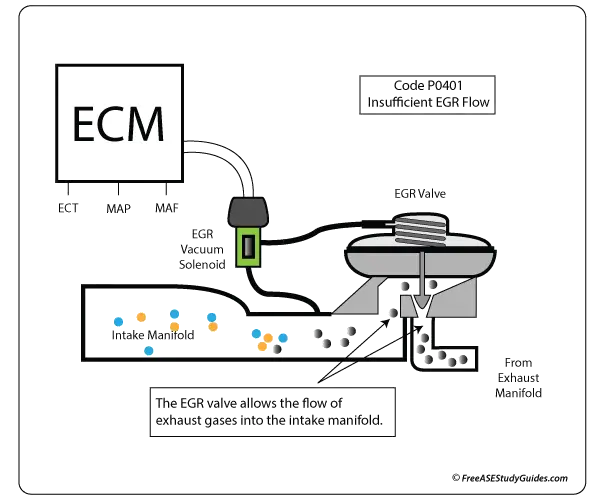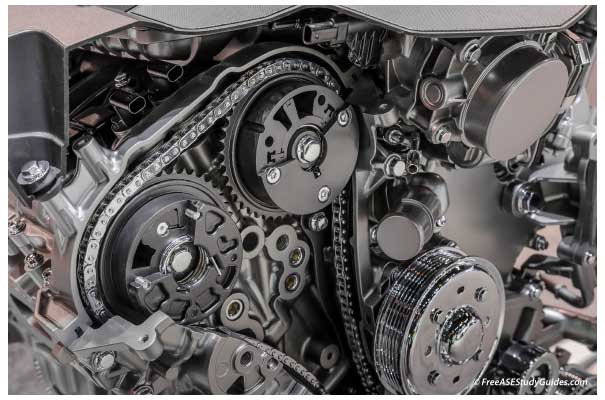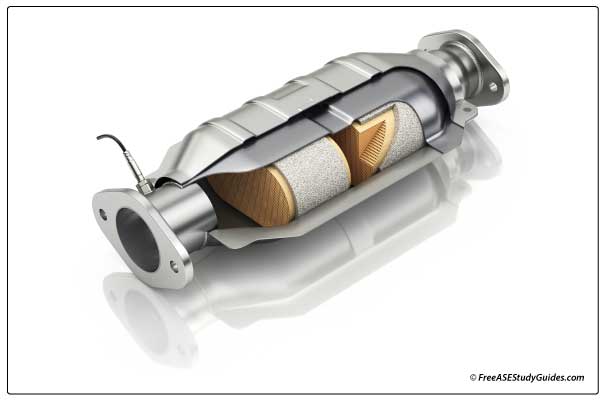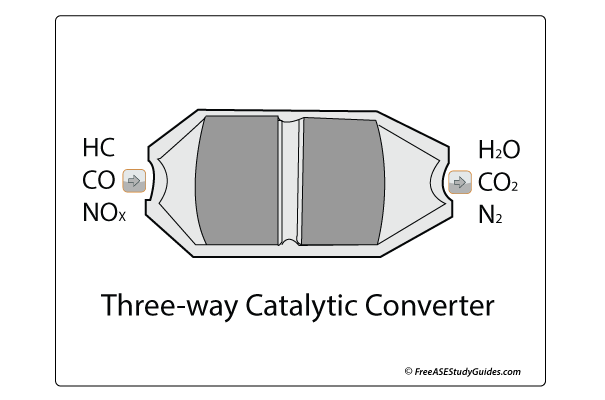Nitrogen Oxides (NOx) Emissions

The ECM controls the EGR or exhaust gas recirculation valve according to operating conditions. The valve prevents high combustion chamber temperatures from forming NOx oxides of nitrogen, a smog-forming emission. This harmful gas forms if the EGR valve is not opening correctly.

The valve provides a regulated flow of inert exhaust gases into the intake manifold, lowering combustion chamber temperatures. Blending exhaust gas into the chamber keeps it at an acceptable range (below 2500° F), preventing nitrogen and oxygen from bonding. Excessive NOx results in pollution and smog.
(VVT) Variable Valve Timing

Most modern engines have variable valve timing. VVT systems time the exhaust and intake valves, improving low-end and high-end performance. For example, holding the exhaust valve open a little longer allows some exhaust into the combustion chamber during the intake stroke, preventing excessive NOx formation.
Three-way Catalytic Converter

A catalytic converter substrate consists of an aluminum oxide honeycomb coated with materials like platinum and palladium. They react and remove (CO) carbon monoxide and (HC) hydrocarbon from the exhaust stream.

A two-way catalytic converter works by oxidizing CO and HC to (CO2) carbon dioxide and water. A three-way catalytic converter also removes (NOx) oxides of nitrogen from the exhaust.